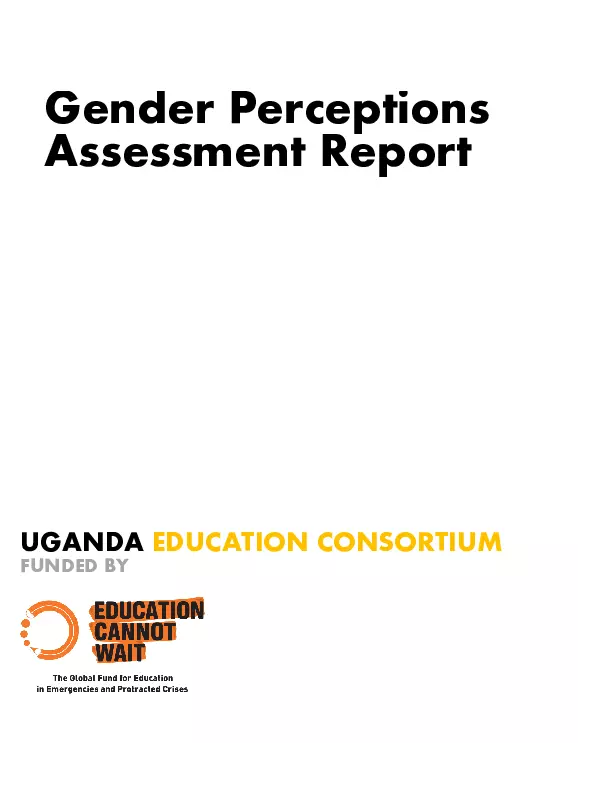
Study: Assessments
Gender Perceptions Assessment Report
Publication year:
2024
English
Format:
(630.7 KiB)
Publisher:
Save the Children International,Save the Children Uganda
Uganda has made considerable strides in addressing the educational needs of refugee and host community children, yet significant unmet and ongoing challenges persist. The Ministry of Education and Sports (MoES) has established the Education Response Plan II (ERP) for Refugees and Host Communities under the Comprehensive Refugee Response Framework (CRRF) to guide these efforts. The Multi-Year Resilience Programme II (MYRP II), funded by Education Cannot Wait, plays a pivotal role in supporting the ERP, targeting improvements in access, quality, and protection within pre-primary, primary, and secondary education for both refugee and host community children, including those with disabilities.
This study, led by Plan International with support from the Consortium Management Unit hosted by Save the Children, investigates gender perceptions among boys within the MYRP II framework. Recognizing that gender norms and pre-existing inequalities significantly impact children in emergencies, the study aims to understand boys’ perspectives on gender roles, stereotypes, and dynamics within their educational and community contexts. The findings are intended to inform tailored interventions and contribute to the broader MYRP results framework, particularly in measuring shifts in gender equality perceptions among boys in conflict- and crisis-affected areas.
Conducted across four districts and refugee settlements—Yumbe, Kyegegwa, Kikuube, and Terego—the study involved 59 schools and utilized a cross-sectional design with a quantitative approach. Closed-ended questionnaires, adapted from the School-Related Gender-Based Violence Measurement Toolkit, were employed to gather data. Random and purposive sampling ensured a representative and relevant sample of boys. Data analysis was performed using Excel, with responses coded and interpreted to reveal trends and variations in gender perceptions.
Key measures to ensure data quality included immediate post-interview checks, selection of locally fluent data collectors, thorough training sessions, daily debriefings, and integrated data quality controls. The study’s insights are expected to enhance program implementation by highlighting how boys perceive gender roles and dynamics, ultimately aiming to foster a more equitable educational environment for both girls and boys in refugee and host community settings.
The demographic profile of respondents includes settlement, disability status, and age. Bidi Bidi had the highest number of respondents (500, 28%), followed by Kyaka II (465, 26%), Kyangwali (423, 24%), and Imvepi (398, 22%). Most respondents were in primary education (72%), with secondary education (27%) and Accelerated Education Programs (1%). The study found that a significant majority of boys walked to school (97%), with 75% walking with friends and 24% alone.
The disability status of respondents showed that Imvepi and Kyangwali had higher percentages of learners with disabilities (76% and 75% respectively) compared to Bidi Bidi and Kyaka II. Age distribution indicated that most respondents were 15 years and older (75% overall), with variations across settlements.
The study revealed that 56% of learners demonstrated positive perceptions of gender-related issues, while 38% held negative perceptions, and 6% were uncertain. Bidi Bidi exhibited the highest positive perception (63%), while Imvepi had the lowest (45%). These findings underscore the need for targeted educational interventions to address misconceptions and promote gender equality.
Read full abstract
Authors
View & Download
English
1 Documents
Document information
Authors
Content type
Country
Region
Topics
Rights
© Author/Publisher
Keywords
Found a mistake? Help us improve!
If you have noticed a document assigned to the wrong author or any other inaccuracies, let us know! Your feedback helps us keep our data accurate and useful for everyone.
Share
Link
